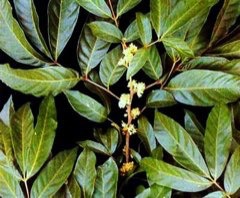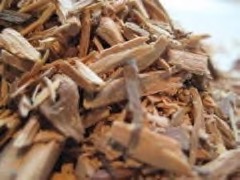 |
|
tudosobreplantas.com.br |
 |
| thenaturalherbalist.co.uk |
Translate this page:
Summary
Ptychopetalum uncinatum or also known as Muira Puama is a flowering small tree in northern South America that grows about 5 m in height. It is native to the Amazon rainforest. It is used as medicinal plant especially for the treatment of sexual impotence, nervous system disorders, erectile dysfunction, paralysis, influenza, rheumatism, etc. It has analgesic effects and it improves libido.
Physical Characteristics

 Ptychopetalum uncinatum is an evergreen Tree growing to 5 m (16ft) by 5 m (16ft) at a medium rate.
Ptychopetalum uncinatum is an evergreen Tree growing to 5 m (16ft) by 5 m (16ft) at a medium rate.
See above for USDA hardiness. It is hardy to UK zone 10.
Suitable for: light (sandy), medium (loamy) and heavy (clay) soils and prefers well-drained soil. Suitable pH: mildly acid, neutral and basic (mildly alkaline) soils. It cannot grow in the shade. It prefers moist soil.
UK Hardiness Map
US Hardiness Map
Synonyms
No synonyms are recorded for this name.
Plant Habitats
Edible Uses
References More on Edible Uses
Medicinal Uses
Plants For A Future can not take any responsibility for any adverse effects from the use of plants. Always seek advice from a professional before using a plant medicinally.
Adaptogen Analgesic Antirheumatic Aphrodisiac Cardiac Hypotensive Stimulant Tonic
Muira Puama has a long history of medicinal use by the native peoples of the Amazon region. Many of these uses were adopted by the Europeans when they arrived in S. America and have subsequently been verified by modern research. The plant is commonly used in many areas of S. America, and this use is spreading to other areas of the world[318 ]. The main plant chemicals found in muira puama include: alpha-copaene, alpha-elemene, alpha-guaiene, alpha-humulene, alpha-muurolene, alpha-pinene, alpha-resinic acid, alpha-terpinene, arachidic acid, allo-aromadendren, behenic acid, beta-bisabolene, beta-caryophyllene, beta-pinene, beta-resinic acid, beta-sitosterol, beta-transfarnesene, borneol, campesterols, camphene, camphor, car-3-ene, caryophyllene, cerotic acid, chromium, coumarin, cubebene, delta-cadinene, dotriacontanoic acid, elixene, ergosterols, eugenol, essential oils, gamma-muurolene, hentriacontanoic acid, heptacosanoic acid, lignoceric acid, limonene, linalool, lupeol, melissic acid, montanic acid, muirapuamine, myrcene, nonacosanoic acid, para-cymene, pentacosanoic acid, phlobaphene, stigmasterols, trichosanic acid, and uncosanic acid. One of the early studies into the plant showed that muira puama was effective in treating disorders of the nervous system and sexual impotence, and that ?permanent effect is produced in locomotor ataxia, neuralgias of long standing, chronic rheumatism, and partial paralysis.?[318 ]. The benefits of treating impotence with muira puama have been studied in two human trials in France, which reported that muira puama was effective in improving libido and treating erectile dysfunction[318 ]. In another study, muira puama extracts have been reported to have adaptogenic, antifatigue, antistress, and beneficial effects on the central nervous system[318 ]. Researchers in Brazil have documented a definite central nervous system effect of the bark[318 ]. The bark of muira puama also has demonstrated a mild, short-lived, hypotensive effect[318 ]. The root was found to inhibit stress-induced ulcers[318 ]. The leaf has demonstrated an analgesic effect[318 ]. Brazilian researchers reported in 2003 that an alcohol extract of muira puama facilitated memory retrieval and noted it may be beneficial for Alzheimer's patients. Their next study published in 2004 reported that an alcohol extract of muira puama protected and increased the viability of brain cells (partly through an antioxidant effect) which may be beneficial for stroke victims[318 ]. Traditionally, the stems and roots from young plants are used as a tonic to treat neuromuscular problems; a root decoction is used in baths and massages for treating paralysis and beriberi; whilst a root-and-bark tea is taken to treat sexual debility, rheumatism, influenza, and cardiac and gastrointestinal weakness. The plant is also valued there as a preventive for baldness[318 ]. In modern herbalism, muira puama is a highly-regarded sexual stimulant with a reputation as a powerful aphrodisiac. It is used as a neuromuscular tonic to treat weakness and paralysis, dyspepsia, menstrual disturbances, sexual impotency, influenza, and central nervous system disorders[318 ]. It is applied externally to treat chronic rheumatism[318 ]. To achieve the libido and potency effects of this particular plant, proper preparation methods must be employed. The active constituents thought to be responsible for muira puama's potency and libido effect are not soluble in water - taking bark or root powder in capsules or tablets will not be effective because these chemical cannot be digested or absorbed. High heat for at least 20 minutes with alcohol is necessary to free the volatile and essential oils, terpenes, gums, and resins found in the bark and root which have been linked to muira puama's beneficial effects[318 ].
References More on Medicinal Uses
The Bookshop: Edible Plant Books
Our Latest books on Perennial Plants For Food Forests and Permaculture Gardens in paperback or digital formats.

Edible Tropical Plants
Food Forest Plants for Hotter Conditions: 250+ Plants For Tropical Food Forests & Permaculture Gardens.
More

Edible Temperate Plants
Plants for Your Food Forest: 500 Plants for Temperate Food Forests & Permaculture Gardens.
More

More Books
PFAF have eight books available in paperback and digital formats. Browse the shop for more information.
Shop Now
Other Uses
Other Uses: None known
Special Uses
References More on Other Uses
Cultivation details
Closely related to Ptychopetalum olacoides, it can be used interchangeably with that species, though is believed to be slightly less effective[318 ].
References Carbon Farming Information and Carbon Sequestration Information
Temperature Converter
Type a value in the Celsius field to convert the value to Fahrenheit:
Fahrenheit:
The PFAF Bookshop
Plants For A Future have a number of books available in paperback and digital form. Book titles include Edible Plants, Edible Perennials, Edible Trees,Edible Shrubs, Woodland Gardening, and Temperate Food Forest Plants. Our new book is Food Forest Plants For Hotter Conditions (Tropical and Sub-Tropical).
Shop Now
Plant Propagation
Seed -
Other Names
If available other names are mentioned here
marapuama, muira puama, muira-puama, potency wood, ptychopetalum uncinatum.
Native Range
SOUTHERN AMERICA: Brazil (Amazonas, Pará)
Weed Potential
Right plant wrong place. We are currently updating this section.
Please note that a plant may be invasive in one area but may not in your area so it's worth checking.
Conservation Status
IUCN Red List of Threatened Plants Status : This taxon has not yet been assessed

Growth: S = slow M = medium F = fast. Soil: L = light (sandy) M = medium H = heavy (clay). pH: A = acid N = neutral B = basic (alkaline). Shade: F = full shade S = semi-shade N = no shade. Moisture: D = dry M = Moist We = wet Wa = water.
Now available:
Food Forest Plants for Mediterranean Conditions
350+ Perennial Plants For Mediterranean and Drier Food Forests and Permaculture Gardens.
[Paperback and eBook]
This is the third in Plants For A Future's series of plant guides for food forests tailored to
specific climate zones. Following volumes on temperate and tropical ecosystems, this book focuses
on species suited to Mediterranean conditions—regions with hot, dry summers and cool, wet winters,
often facing the added challenge of climate change.
Read More
Expert comment
Author
Anselmino.
Botanical References
Links / References
For a list of references used on this page please go here
A special thanks to Ken Fern for some of the information used on this page.
Readers comment
| Add a comment |
|
If you have important information about this plant that may help other users please add a comment or link below. Only comments or links that are felt to be directly relevant to a plant will be included. If you think a comment/link or information contained on this page is inaccurate or misleading we would welcome your feedback at [email protected]. If you have questions about a plant please use the Forum on this website as we do not have the resources to answer questions ourselves.
* Please note: the comments by website users are not necessarily those held by PFAF and may give misleading or inaccurate information.
To leave a comment please Register or login here All comments need to be approved so will not appear immediately.
|
Subject : Ptychopetalum uncinatum
|
|
|
|